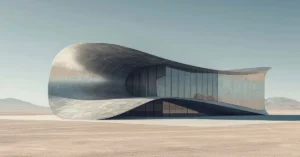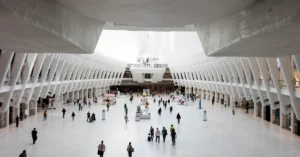Impact of Architecture on Perceptions and Lives
Architecture, the art and science of designing and constructing buildings, is more than just bricks and mortar. It is a profound influencer that shapes our perception and experience of the world around us. While we often take our built environment for granted, it plays a pivotal role in how we feel, think, and interact with our surroundings. In this blog post, we will explore the multifaceted ways in which architecture transcends mere construction and impacts our lives on a deeper level.

Architectural Influences That Reshape Our World
1. The Power of Aesthetics
Aesthetic appeal is one of the most apparent and immediate impacts of architecture. Beautiful buildings can inspire awe and admiration, influencing our moods and emotions. For instance, the grandeur of the Eiffel Tower in Paris or the sleek modernity of the Sydney Opera House can evoke a sense of wonder and appreciation. Conversely, dilapidated structures can elicit feelings of melancholy or disapproval.
Consider your daily commute to work. If it involves passing through a district filled with unattractive, uninspiring buildings, it can lead to a less positive start to your day. On the other hand, if your journey is punctuated by captivating architectural landmarks, it can boost your overall sense of well-being. The aesthetics of our surroundings influence our emotional state, whether we realize it or not.
2. Functionality and Human Interaction
Beyond aesthetics, architecture profoundly influences the functionality of spaces and how we interact within them. Well-designed buildings can enhance productivity, foster creativity, and encourage social interaction. For instance, open-plan offices with flexible workspaces are becoming increasingly popular, as they promote collaboration and communication among employees.
Moreover, public spaces designed with people in mind create a sense of community. Think about a beautifully landscaped park with well-placed benches and walkways. Such spaces encourage people to gather, interact, and enjoy their surroundings. In contrast, poorly designed public spaces can deter people from using them, leading to isolation and social disconnection.
3. The Connection with Nature
Biophilic architecture, a concept gaining traction in recent years, highlights the profound connection between architecture and nature. This approach incorporates natural elements, such as plants, natural lighting, and sustainable materials, into the built environment. Biophilic design enhances our connection to nature and has been shown to reduce stress, boost cognitive performance, and improve overall well-being.
Imagine a building with large windows that frame picturesque views of a nearby forest or a rooftop garden with lush greenery. Such features not only provide aesthetic delight but also connect us with the natural world. They offer a respite from the concrete jungle, promoting relaxation and mental rejuvenation.
4. Architectural Heritage and Identity
Architecture also serves as a cultural and historical marker, shaping our collective identity. Iconic buildings like the Taj Mahal, the Great Wall of China, and the Pyramids of Giza are not only testaments to human engineering but also symbols of the cultures and civilizations that created them. These architectural marvels tell stories of our past, preserving history and tradition.
In our modern world, contemporary architecture contributes to the identity of cities and regions. The futuristic skyline of Dubai, the historic charm of Prague, or the art deco splendor of Miami’s South Beach all contribute to the unique character and identity of these places. Architecture, through its design and symbolism, plays a vital role in shaping how we perceive and relate to different locations.
5. Sustainability and Environmental Impact
The impact of architecture goes beyond human experience; it extends to our planet. Sustainable architecture has emerged as a critical response to the environmental challenges we face. Buildings are responsible for a significant portion of global energy consumption and carbon emissions. Sustainable design principles, such as energy-efficient insulation, renewable energy sources, and eco-friendly materials, aim to reduce this environmental burden.
Sustainable architecture not only minimizes the ecological footprint of buildings but also educates people about the importance of responsible environmental stewardship. It serves as a reminder that our built environment must coexist harmoniously with the natural world, for the benefit of both present and future generations.
Conclusion
In conclusion, architecture transcends the mere construction of buildings; it’s a force that profoundly influences our perceptions, emotions, and behaviors. Whether through aesthetics, functionality, or its connection to nature, architecture shapes our existence. It also holds the key to a more sustainable and environmentally conscious future.
The next time you walk through a bustling city or admire a historic landmark, take a moment to appreciate the profound impact that architecture has on your life and the world around you. It’s a testament to human creativity and ingenuity, a mirror reflecting our values and aspirations, and a beacon guiding us toward a brighter, more harmonious future.
If you’re interested in learning more about architecture firms in Europe, check out this comprehensive list of the top 50 firms compiled by Archgyan. From innovative startups to long-established industry leaders, this list has it all. Take a look and discover some of the most inspiring and influential architecture firms in Europe today.
If you’re interested in architecture and want to learn more about this amazing field, subscribe to our podcast on youtube
For more SketchUp tutorials, head to https://www.sketchupguru.com













